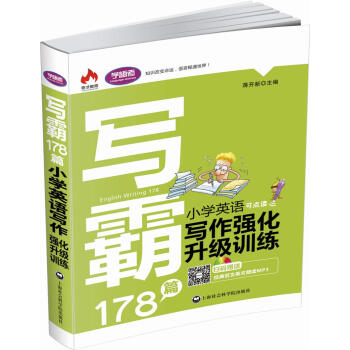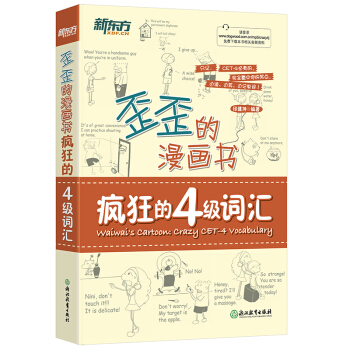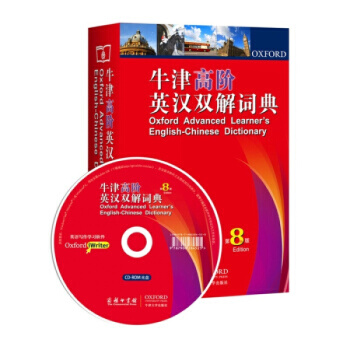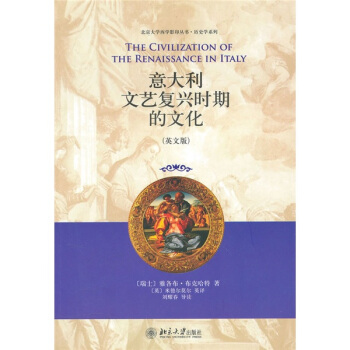
意大利文艺复兴时期的文化(英文版) epub pdf mobi txt 电子书 下载 2024
意大利文艺复兴时期的文化(英文版) epub pdf mobi txt 电子书 下载 2024
简体网页||繁体网页
点击这里下载
发表于2024-05-07
商品介绍
意大利文艺复兴时期的文化(英文版) epub pdf mobi txt 电子书 下载 2024
相关书籍
书籍描述
内容简介
《意大利文艺复兴时期的文化》是一部文化史研究的经典之作。布克哈特把文艺复兴时期(14—16世纪)的意大利视为一个整体,从政治、社会、文学、道德观念、社交礼仪等多角度阐释这一时期的意大利人所体现的“人文主义”的近代精神。在他看来,这一精神标志着文艺复兴时期成为告别中世纪、步入近代世界的关键环节。这一巨著对后人理解和认识西方文明史产生了深远的影响。目录
导读第一编 作为艺术品的国家
导论
14世纪的僭主政治
15世纪的僭主政治
小僭主
大王朝
僭主政治的反对者
共和国
15世纪的威尼斯
14世纪以来的佛罗伦萨
意大利各国的对外政策
作为艺术品的战争
教皇的统治及其危险
音女利的辱围者
第二编 个体的发展
意大利国与个体
个人的完美化
近代荣誉观
近代的嘲讽与笑话
第三编 古典文化的复活
引言
罗马:废墟之城
古代作家
14世纪的人文主义
大学和学校
人文主义的促进者
古代的再现:书信体和拉丁文演说
拉丁文的演说辞
用拉丁文写作的论文和历史
一般文化的拉丁化
现代拉丁文诗歌
16世纪人文主义者的衰落
第四编 世界的发现与人的发现
意大利人的旅行
意大利的自然科学
自然美的发现
人的发现
诗歌中对精神的描写
传记
有关诸民族和诸城邦的描写
对人外貌的描写
对生活动态的描写
第五编 社交与节庆
社会等级的调和
生活外表的精致化
作为社交基础的语言
较高形式的社交
完美的社交家
妇女的地位
家政
节庆
第六篇 道德与信仰
注释
书目信息
索引
精彩书摘
Oddi were forced to abandon Perugia, and the city became a beleaguered fortress under the absolute despotism of the Baglioni, who used even the cathedral as barracks. Plots and surprises were met with cruel vengeance; in the year 1491, after 130 conspirators, who had forced their way into the city, were killed and hung up at the Palazzo Comunale, thirty-five altars were erected in the square, and for three days mass was performed and processions held, to take away the curse which rested on the spot. A nephew of Innocent VIII was in open day run through in the street. A nephew of Alexander VI, who was sent to smooth matters over, was dismissed with public contempt. All the while the two leaders of the ruling house, Guido and Ridolfo, were holding frequent interviews with Suor Colomba of Rieti, a Dominican nun of saintly reputation and miraculous powers, who under penalty of some great disaster ordered them to make peace-naturally in vain. Nevertheless the chronicle takes the opportunity to point out the devotion and piety of the better men in Perugia during this reign of terror. When in 1494 Charles VIII approached, the Baglioni from Perugia and the exiles encamped in and near Assisi conducted the war with such ferocity, that every house in the valley was levelled to the ground. The fields lay untilled, the peasants were turned into plundering and murdering savages, the fresh-grown bushes were filled with stags and wolves, and the beasts grew fat on the bodies of the slain, on so-called ‘Christian flesh.'When Alexander VI withdrew (1495) into Umbria before Charles VIII, then returning from Naples, it occurred to him, when at Perugia, that he might now rid himself of the Baglioni once for all; he proposed to Guido a festival or tournament, or something else of the same kind, which would bring the whole family together. Guido, however, was of opinion, ‘that the most impressive spectacle of all would be to see the whole military force of Perugia collected in a body,' whereupon the Pope abandoned his project. Soon after, the exiles made another attack, in which nothing but the personal heroism of the Baglioni won them the victory. It was then that Simonetto Baglione, a lad of scarcely eighteen, fought in the square with a handful of followers against hundreds of the enemy: he fell at last with more than twenty wounds, but recovered himself when Astorre Baglione came to his help, and mounting on horseback in gilded armour with a falcon on his helmet, ‘like Mars in bearing and in deeds, plunged into the struggle.'At that time Raphael, a boy of twelve years of age, was at school under Pietro Perugino. The impressions of these days are perhaps immortalized in the small, early pictures of St. Michael and St. George: something of them, it may be, lives eternally in the great painting of St. Michael: and if Astorre Baglione has anywhere found his apotheosis, it is in the figure of the heavenly horseman in the Heliodorus.
The opponents of the Baglioni were partly destroyed, partly scattered in terror, and were henceforth incapable of another enterprise of the kind. After a time a partial reconciliation took place, and some of the exiles were allowed to return. But Perugia became- none the safer or more tranquil: the inward discord of the ruling family broke out in frightful excesses. An opposition was formed against Guido and Ridolfo and their sons Gianpaolo, Simonetto, Astorre, Gismondo, Gentile, Marcantonio and others, by two great-nephews, Grifone and Carlo Barciglia; the latter of the two was also nephew of Varano, Prince of Camerino, and brother-in-law of one of the former exiles, Ieronimo della Penna. In vain did Simonetto, warned by sinister presentiment, entreat his uncle on his knees to allow him to put Penna to death: Guido refused. The plot ripened suddenly on the occasion of the marriage of Astorre with Lavinia Colonna, at Midsummer 1500. The festival began and lasted several days amid gloomy forebodings, whose
deepening effect is admirably described by Matarazzo. Varano fed and encouraged them with devilish ingenuity: he worked upon Grifone by the prospect of undivided authority, and by stories of an imaginary intrigue of his wife Zenobia with Gianpaolo. Finally each conspirator was provided with a victim. (The Baglioni lived all of them in separate houses, mostly on the site of the present castle.) Each received fifteen of the bravos at hand; the remainder were set on the watch. In the night of July 15 the doors were forced, and Guido, Astorre, Simonetto, and Gismondo were murdered; the others succeeded in escaping.
As the corpse of Astorre lay by that of Simonetto in the street, the spectators, ‘and especially the foreign students,' compared him to an ancient Roman, so great and imposing did he seem. In the features of Simonetto could still be traced the audacity and defiance which death itself had not tamed. The victors went round among the friends of the family, and did their best to recommend themselves; they found all in tears and preparing to leave for the country. Meantime the escaped Baglioni collected forces without the city, and on the following day forced their way in, Gianpaolo at their head, and speedily found adherents among others whom Barciglia had been threatening with death. When Grifone fell into their hands near Sant'Ercolano, Gianpaolo handed him over for execution to his followers. Barciglia and Penna fled to Varano, the chief author of the tragedy, at Camerino; and in a moment, almost without loss, Gianpaolo became master of the city.
……
前言/序言
意大利文艺复兴时期的文化(英文版) epub pdf mobi txt 电子书 下载 2024
意大利文艺复兴时期的文化(英文版) 下载 epub mobi pdf txt 电子书 2024意大利文艺复兴时期的文化(英文版) pdf 下载 mobi 下载 pub 下载 txt 电子书 下载 2024
意大利文艺复兴时期的文化(英文版) mobi pdf epub txt 电子书 下载 2024
意大利文艺复兴时期的文化(英文版) epub pdf mobi txt 电子书 下载读者评价
经典好书,百读不厌。
评分慢慢读,学习写作方法最为重要
评分讲述文艺复兴历史的名作,还是英文版,读来省却了很多名词的翻译,这样以后读到英文名字也不会反应不过来~赞~
评分好。
评分《意大利文艺复兴时期的文化》一书共有6篇,记述了从13世纪下半叶至16世纪中叶这3百年间意大利文化的发展情况,依次阐述了政治、思想、学术、社交生活和道德宗教等方面的内容。这种按照专题分类论述的方法与传统的按年代顺序的记叙方法完全不同。初读这部名著,似乎会感到它范围广泛、头绪繁多、难以把握中心。譬如像但丁、彼得拉克和薄伽丘等所谓意大利文艺复兴运动时期的“前三杰”,虽然他们在书中反复出现,但是却分散在各个专题之中。另外,此书的第1篇题为《作为一种艺术工作的国家》,是书中最长的一篇,约占全书的4分之1左右,下分10章,从不同的侧面叙述了文艺复兴时期意大利的政治制度和政治形势。布克哈特虽然突破了传统史学专注政治史和军事史的框框,但是他仍然把政治看作为整个社会的基础,认为政治对文化的发展起着决定性的影响作用。不过布克哈特重视的不是具体的政治事件,而是影响社会变化的政治制度和政治形势,即政治背景,这是与传统史学的不同之处。这种以论述政治形势开始、接着依次介绍文化状况的撰史方法,为欧洲后来的文化史著述树立了一个范例。
评分太理论,比较合适专业研究人士,不太适合我这样的业余人士
评分经典的,据说中文翻译的不好,只好买原著了
评分经典著作,京东购物方便快捷
评分物美价廉,惠我学子,北大出版社做了件好事。
意大利文艺复兴时期的文化(英文版) epub pdf mobi txt 电子书 下载 2024
意大利文艺复兴时期的文化(英文版) epub pdf mobi txt 电子书 下载 2024
分享链接
相关书籍
-
 德语介词ABC epub pdf mobi txt 电子书 下载
德语介词ABC epub pdf mobi txt 电子书 下载 -
 英国学生科学读本(套装上下册)(英汉双语版) epub pdf mobi txt 电子书 下载
英国学生科学读本(套装上下册)(英汉双语版) epub pdf mobi txt 电子书 下载 -
 大中华文库:红楼梦(汉法对照)(套装共8册) epub pdf mobi txt 电子书 下载
大中华文库:红楼梦(汉法对照)(套装共8册) epub pdf mobi txt 电子书 下载 -
 高考英语夜读美文100篇(附赠MP3光盘+高考考纲词汇表) epub pdf mobi txt 电子书 下载
高考英语夜读美文100篇(附赠MP3光盘+高考考纲词汇表) epub pdf mobi txt 电子书 下载 -
 企鹅口袋书系列·伟大的思想:恐惧和战栗 epub pdf mobi txt 电子书 下载
企鹅口袋书系列·伟大的思想:恐惧和战栗 epub pdf mobi txt 电子书 下载 -
 常春藤英语 三级·上(常春藤英语系列) epub pdf mobi txt 电子书 下载
常春藤英语 三级·上(常春藤英语系列) epub pdf mobi txt 电子书 下载 -
![THE VOICE OF THE CITY: BEST SHORT STORIES OF O. Henry [欧·亨利经典短篇小说] pdf epub mobi 电子书 下载](/static/pix.jpg) THE VOICE OF THE CITY: BEST SHORT STORIES OF O. Henry [欧·亨利经典短篇小说] epub pdf mobi txt 电子书 下载
THE VOICE OF THE CITY: BEST SHORT STORIES OF O. Henry [欧·亨利经典短篇小说] epub pdf mobi txt 电子书 下载 -
 1分钟英语:巧用听写练听力 epub pdf mobi txt 电子书 下载
1分钟英语:巧用听写练听力 epub pdf mobi txt 电子书 下载 -
 晨读夜诵:英语名篇诵读精华大全集(英汉对照 附赠MP3下载) epub pdf mobi txt 电子书 下载
晨读夜诵:英语名篇诵读精华大全集(英汉对照 附赠MP3下载) epub pdf mobi txt 电子书 下载 -
 新概念英语青少版同步测试1B epub pdf mobi txt 电子书 下载
新概念英语青少版同步测试1B epub pdf mobi txt 电子书 下载 -
![英语五千单词百日通(第二版) [Mastering English Vocabulary in One Hundred Days] pdf epub mobi 电子书 下载](/static/pix.jpg) 英语五千单词百日通(第二版) [Mastering English Vocabulary in One Hundred Days] epub pdf mobi txt 电子书 下载
英语五千单词百日通(第二版) [Mastering English Vocabulary in One Hundred Days] epub pdf mobi txt 电子书 下载 -
 雅思机经题源大全口语分册(剑10版) epub pdf mobi txt 电子书 下载
雅思机经题源大全口语分册(剑10版) epub pdf mobi txt 电子书 下载 -
 单词过目不忘:初中生必须掌握的2000个核心英语单词(爆笑彩图版) epub pdf mobi txt 电子书 下载
单词过目不忘:初中生必须掌握的2000个核心英语单词(爆笑彩图版) epub pdf mobi txt 电子书 下载 -
 写霸178篇:小学英语写作强化升级训练 epub pdf mobi txt 电子书 下载
写霸178篇:小学英语写作强化升级训练 epub pdf mobi txt 电子书 下载 -
 读霸178篇:小学英语阅读强化升级训练 epub pdf mobi txt 电子书 下载
读霸178篇:小学英语阅读强化升级训练 epub pdf mobi txt 电子书 下载 -
 新东方 SSAT/ISEE备考策略与模拟试题 epub pdf mobi txt 电子书 下载
新东方 SSAT/ISEE备考策略与模拟试题 epub pdf mobi txt 电子书 下载 -
 新东方 歪歪的漫画书:疯狂的四级词汇 epub pdf mobi txt 电子书 下载
新东方 歪歪的漫画书:疯狂的四级词汇 epub pdf mobi txt 电子书 下载 -
 2017年最新版高考英语语法、词汇新题型300篇专项突破 epub pdf mobi txt 电子书 下载
2017年最新版高考英语语法、词汇新题型300篇专项突破 epub pdf mobi txt 电子书 下载 -
 牛津高阶英汉双解词典(第8版) 初高中学生工具书 英语教辅书籍【新华书店正版书籍】 epub pdf mobi txt 电子书 下载
牛津高阶英汉双解词典(第8版) 初高中学生工具书 英语教辅书籍【新华书店正版书籍】 epub pdf mobi txt 电子书 下载 -
 包邮 朗文新概念英语青少版入门级A+B 学生用书+练习册 新概念英语青少年版教材 少儿英语 epub pdf mobi txt 电子书 下载
包邮 朗文新概念英语青少版入门级A+B 学生用书+练习册 新概念英语青少年版教材 少儿英语 epub pdf mobi txt 电子书 下载







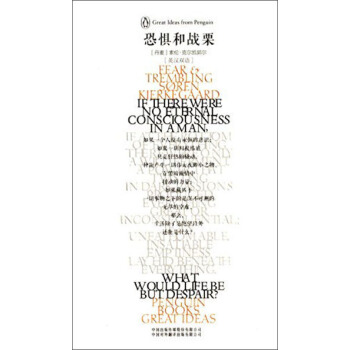

![THE VOICE OF THE CITY: BEST SHORT STORIES OF O. Henry [欧·亨利经典短篇小说] pdf epub mobi 电子书 下载](https://pic.tinynews.org/11643833/54c5d2eaN52ecb5df.jpg)



![英语五千单词百日通(第二版) [Mastering English Vocabulary in One Hundred Days] pdf epub mobi 电子书 下载](https://pic.tinynews.org/11829372/5673c265N25583e59.jpg)


